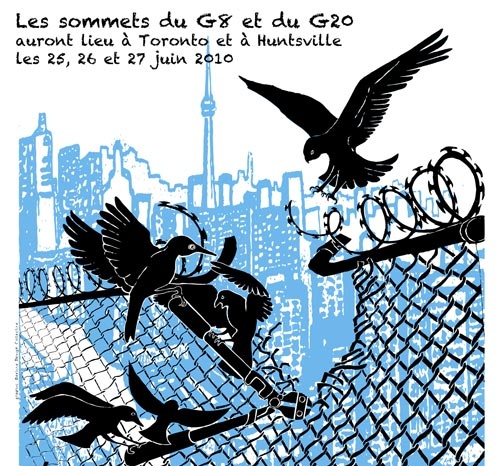 |
 |
 |
 |
 |
 |
|
 |
 |
 |
 |
 |
 |
 |
Régions du Québec |  |
 |
 |
|
 |
 |
|
 |
 |
|
 |
 |
 |
 |
 |
 |
Temas |  |
 |
 |
|
 |
 |
|
 |
|
 |
 |
 |
Globalisation and the revolt of tribal people in Orissa
20 March 2006. A World to Win News Service. Globalisation means that hundreds of millions, even billions of lives are being swallowed under the thundering wheels of imperialist finance capital. The tribal people of the eastern Indian state of Orissa are locked in a desperate fight to escape being crushed. They are fighting the theft of their land and livelihood by multinational corporations and giant Indian capitalists dependent on the merciless international market. The following is abridged from a lengthy article about the revolt of tribal people in Orissa and other states of India in the March 2006 issue of the Indian magazine People’s March. (www.peoplesmarch.com)
Globalisation and the revolt of tribal people in Orissa
20 March 2006. A World to Win News Service. Globalisation means that hundreds of millions, even billions of lives are being swallowed under the thundering wheels of imperialist finance capital. The tribal people of the eastern Indian state of Orissa are locked in a desperate fight to escape being crushed. They are fighting the theft of their land and livelihood by multinational corporations and giant Indian capitalists dependent on the merciless international market. The following is abridged from a lengthy article about the revolt of tribal people in Orissa and other states of India in the March 2006 issue of the Indian magazine People’s March. (www.peoplesmarch.com)
The New Year was ushered in by the mowing down of 12 tribals in Orissa. While
the elite spent crores (tens of millions) celebrating in the fashionable malls, the poverty-stricken tribals of Orissa were being massacred for demanding their rights to their own land and forests. The contrasts are vivid: TV channels blaring film stars and five-star culture; the half-hungry tribals struggling for survival against police acting on behalf of the mining companies.
On 2 January the police gunned down 12 tribals and seriously injured another 40 opposing the construction of the boundary wall of the proposed steel plant of Tata Steel at Kalinga Nagar of Jajpur district. The demand of the tribal people who would be affected by the proposed project was that the government allow the construction of the boundary wall only after the company paid them adequate compensation (for their land) and ensured proper rehabilitation (of damage caused to the environment and the economy). Instead of discussions, the government sought to silence them with brute force.
On that black Monday, nine platoons of policemen came in vehicles and took positions at the construction site to counter any protest by the tribal people. Some policemen, armed with semi-automatic rifles, surrounded the site, with the obvious intention to shoot to kill. The top officers who have the authority to give the order to fire were present from the very start. The Executive magistrate, the District Superintendent of Police and the Collector were all present.
The tribal people had started assembling at a distance to thwart the construction work, as they had done on at least two previous occasions. When the bulldozers roared into action, the men and women closed in on the site demanding stoppage of the work and negotiations. No attempt was even made at discussions. Instead the tribals had to face rubber bullets and tear-gas shells. This infuriated the tribals and they fought back heroically. They hit back with bricks and bows and arrows. In the battle a policeman was captured and hacked to death.
The police, panic stricken, began to fire directly into the crowd. The firing went on for about an hour killing 12, including a 13- year boy and three women. But this did not deter the tribals. With the bodies of some of the dead they blocked all roads to Kalinga Nagar. The protesters started a dharna (sit-in) on the main Daitri-Paradip expressway with four corpses that they had recovered, demanding that the police hand over the remaining bodies to them.
Tension built up further on the morning of 4 January when the tribals discovered that five of the bodies returned had their palms chopped off and their genitals mutilated. The tribals were horrified to find that five males had their penis cut off and one female had her breast cut off. Though the doctors were accused of this, it was clear that they were not killed in the shooting but had been arrested, brutally tortured and then killed. The government tried desperately to diffuse the crisis but they continued the dharna with the 12 bodies. Finally, though the dharna continued, the bodies were cremated. At the cremation grounds the tribal leaders vowed not to part with even an inch of their ancestral land.
On 7 January there was a statewide bandh (shut-down) which crippled life in Orissa. Roads and even rail traffic was disrupted due to blockades throughout the state. The bandh was also held in Jharkhand.
On 31 January, the tribals held a massive rally close to the spot of the firing. They have refused any cooperation whatsoever with the government. Their blockade of the expressway for over a month now has badly hit the movement of goods and minerals to and from the Paradeep port. But even if their blockade is lifted, the tribals are determined to concede even an inch of their land to any industrial project in the area in the future.
A press statement issued by the Central Committee of the Communist Party of India (Maoist) severely condemned the brutal massacre: “The killing of the policeman is but natural and we hail people’s continued resistance despite facing cruel repression... The BJD government, which is opening Orissa to the rapacious and greedy Goliaths for the exploitation of invaluable mineral resources, doesn’t care a hoot to the poor and downtrodden.
“The vast stretches of adivasi (tribal) areas ranging from Dandakaranya to Jharkhand are threatened by the monstrous multinational corporations and Indian compradors. These plunderers working hand in glove with the Central and state governments are determined to drive these indigenous people out of their homes and hearths. Apart from the massive deployment of paramilitary and other armed forces, the governments using fascist gangs, which so far killed 100 adivasi people and raped many women, destroyed 40 villages. Around 20,000 people had to leave their homes because of this state-sponsored terror.
“We appeal to the people of all walks of life to condemn the ongoing repression of the Kalinga Nagar tribals’ struggle and stand in their support. Our Central Committee also appeals to support all the struggles of adivasi of this region where people are losing their livelihood in the name of industrialization and mining.
 |
 |
 |
 |
G20 Especial |  |
 |
 |
|
 |
 |
|
 |
Ofrecemos varios informes independientes y testimonios ...

Lista de acciones durante el 'contracumbre' a Toronto! Algunos medios independientes en Toronto G20 Centro de medios alternativos http://2010.mediacoop.ca Media Co-op Toronto http://toronto.mediacoop.ca Toronto Community Mobilization www.attacktheroots.net (en Inglés) |
 |
 |
 |
 |
 |
 |
 |
CMAQ: Vie associative |  |
 |
 |
|
 |
 |
|
 |
 Collectif à Québec: n'existe plus. Impliquez-vous ! |
 |
 |
 |
 |
 |
 |
 |
 |
|
 |
 |
 |
Ceci est un média alternatif de publication ouverte. Le collectif CMAQ, qui gère la validation des contributions sur le Indymedia-Québec, n'endosse aucunement les propos et ne juge pas de la véracité des informations. Ce sont les commentaires des Internautes, comme vous, qui servent à évaluer la qualité de l'information. Nous avons néanmoins une
Politique éditoriale
, qui essentiellement demande que les contributions portent sur une question d'émancipation et ne proviennent pas de médias commerciaux.
This is an alternative media using open publishing. The CMAQ collective, who validates the posts submitted on the Indymedia-Quebec, does not endorse in any way the opinions and statements and does not judge if the information is correct or true. The quality of the information is evaluated by the comments from Internet surfers, like yourself. We nonetheless have an
Editorial Policy
, which essentially requires that posts be related to questions of emancipation and does not come from a commercial media.


